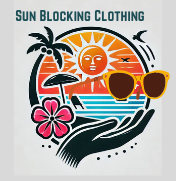
What Is “Sun Protection Clothing?”
Are you ready for the What is sun protection clothing question? Why not start this with the things we know as we think about what sun protection clothing can do for you?
It is a fact that anything between you and the sun will block some sun. An old white tee shirt can offer some sun blocking ability. How can we make sure we are getting enough sun protection? My Son Needs A Sun Blocking Shirt?
Staying out of direct sunlight, between 10 AM and 4 PM is the best way to protect your skin. Wear long sleeved shirts and pants during these times if you do have to be out.
Gloves, or sleeves that come down over the tops of your hands are important to keep these areas from too much sun. Sunglasses and hats with wide brims play an important part.
It really isn’t that difficult, so why are we not doing it? You can get plenty of sun before 10 AM and after 4 PM.
These are the most basic and best ways to take care of your families skin and help prevent skin cancer for them.
For Those Who Are Out In Direct Sun
Now, let us consider the actual numbers around protecting your skin from the sun. This way of thinking about your skin and sun protection will help you with your understanding more of the whys of protecting your skin.
This can give you a place to start building your knowledge about what sun blocking clothing is and how it provides much better protection for your skin.
The unit of measurement for clothing and how much protection it will provide for your skin is called “UPF.” (Units of Protection Factor.) Start with the highest sun block rating which is a 50% sun blocking power, or 50 UPF.
This is the highest level that is in use for an item of clothing. Using this UPF rating means that your item of clothing gives the most complete block from the sun that is possible.
- You have the best you can get to block the sun’s rays at this point.
- 50 % UPF is as good as it can get.
- The highest rating that can be achieved.
So anything over 50% is an overstatement, on a label or an advertisement. A SUF rating of 60% is not a useful guide for you as a consumer for rating clothing. It does not offer 10% more protection than a 50% rating. It is usually an advertising gimmick to get your attention. This number usually indicates that everything has been done that can be done to protect your skin.
Awareness Is A Start
Your old worn white tee shirt mentioned earlier in this article would produce about .05 %, a measurement that is considered not enough to rate on the scale of sun protection to be allowed on a label. A 15% UPF is the smallest amount that a garment can offer and be allowed a rating.
The amount of protection you get with a new, thick less worn tee shirt is more because the cloth itself is thicker. Usually, a cotton-polyester blend will offer more protection as the weaving is a tighter weave. It is just the nature of the way the fibres work together.
Which Fibres Do You Use For A 50% UPF?
Do you know the sun blocking rating of 50 UPF on your clothing can be affected by many factors? The raw material that made the yarn so it could be woven into a fabric makes a difference.
Look at the tightness of the weave. Consider the color, how dark or how light it is? Is it a deep blue or a lighter blue? Is it patterned with dark and light places on the surface of the fabric? The sun blocking ability factors in more where the darker places on the pattern are. So you will want a fabric with more darker color to make the design for sun blocking.
These are just a few things that go into making a fabric that can block the sun. Some manufacturers use dye to help with blocking out the sun.
Natural fibre like cotton and linen are good for producing a sun blocking fabric, if tightly woven and thick. Wool and silk offer protection as well, again as long as the weave is tight. 100% natural, or a blend of polyester or other synthetic man-made fibres are used successfully, as well.
You should aim for a rating of 50% UPF. At this point, only .05 of the sun’s UV rays are getting through. That is a tiny pinpoint of light where the fabric weave takes place.
With normal use, this would block the sun from causing a tan. However, under extreme use, from 10 AM to 4 PM, many hours worth of sun exposure, you will begin to have some slight tanning under your clothes.
Help Your Skin
Other facts that may be overlooked when thinking about clothing for skin protection and sun blocking clothing;
- The stretch of a tight fit will change how your fabrics are able to protect your skin. A teeshirt that stretches on your body and is stretched tight will have larger holes where the weaving of the fabric happens.
- How often has this garment been laundered? Is it getting thin? Is the garment dark or light-coloured?
- How wet or dry is the sun blocking clothing?
Are you aware that the sun blocking rating on your clothing can also be affected by these conditions? The fit, amount of wear, is the garment wet?
We really must pay attention. Skin protection starts with awareness of the amount of sun we are exposing ourselves to. Awareness is key for helping ourselves be safer in the sun.
So I was serious when I asked you about your basic knowledge of protecting your families skin with sun block clothing.
You now know that only one sunburn can put you in line for skin cancer.
Adding more protection with sun blocking clothing is worth considering. You need to know a little bit about your sunblocking clothing. Becoming aware of the UPF ratings is a good starting place.
The Numbers In A Different Way
Another way to think about this protection from the sun is:
- 50% UPF rating, the garment should be blocking 98% of the sun from the skin that the garment covers. (If all your body isn’t covered, you are not all protected.)
- 25% UPF rating, will allow 56% of the sun through.
